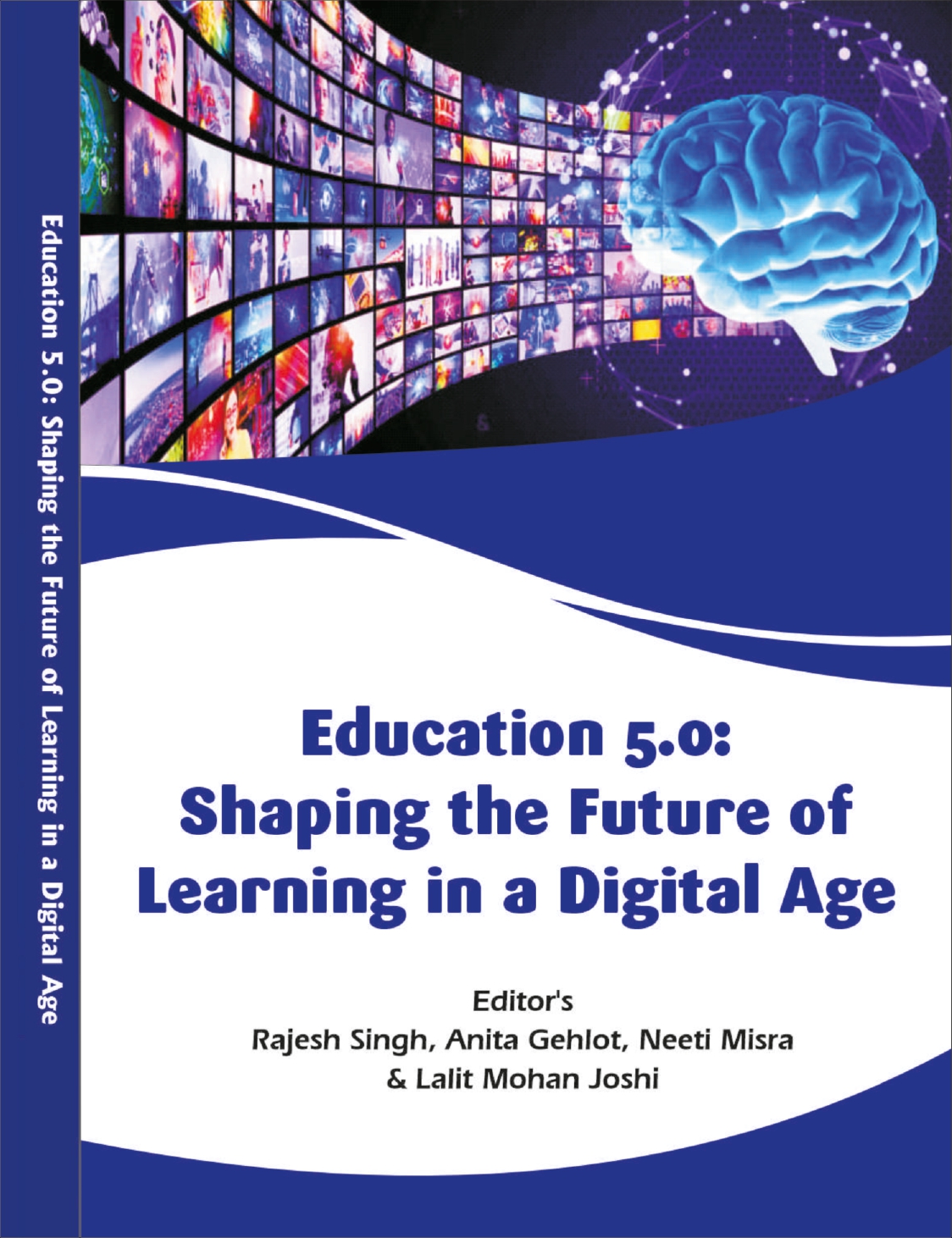AI enabled Virtual Collaborative Learning Classroom
DOI:
https://doi.org/10.55938/wlp.v1i5.178Keywords:
Virtual Collaborative Classrooms, Computer Supported Collaborative Learning (CSCL), Virtual Reality, Online Learning PlatformsAbstract
Collaborative learning in virtual classrooms has tremendous potential in institutions, as it encourages cooperative knowledge production and skill development. This study investigates how a pedagogical model for virtual learning can incorporate this methodology, emphasizing the significance of meticulous preparation, an appropriate dynamic for establishing groups, the relevance of student practices to everyday technology utilization, an evolution to educator responsibilities and learning autonomy. The research underlines the value of technology in education. This article discusses Virtual Collaborative Learning (VCL) as an effective approach to quality assurance in the age of digitization. It presents design characteristics from an academic standpoint and optimizes these approaches through a qualitative examination of written opinions by VCL participants. The research identifies and prioritizes critical criteria for collaborative learning effectiveness from the students' perspective, generating further multi-perspective design recommendations. Adaptive collaborative virtual learning is a technology-enabled technique that employs algorithms to evaluate student data and adjust to a student's learning style, pace, and accomplishments. It capitalizes on gamification to make learning more engaging and interactive, while artificial intelligence (AI), machine learning, virtual reality (VR), and augmented reality (AR) have transformed conventional education. This article explores at how cutting-edge technologies are being created and implemented into the educational system and classroom for enhancing student education and learning environments. This chapter examines the adoption of AI and machine learning in intelligent learning, emphasizing their potential for enhancing learning experiences, personalize education, and improve outcomes. It also encompasses ethical and security issues, highlighting the importance of stringent laws to protect students’ rights. By implementing these guidelines, educators and policymakers may build a more intelligent and successful classroom setting. This study visualizes AI-enabled learning systems, identifies types of interventions, and discusses popular analytical methodologies. It serves as a reference for future studies regarding the development of AI-enabled educational platforms that address specific learning challenges while enhancing user experiences, ultimately directing future research in this area of study.
References
Ramadevi, J., Sushama, C., Balaji, K., Talasila, V., & Sindhwani, N. (2023). AI enabled value-oriented collaborative learning: Centre for innovative education. The Journal of High Technology Management Research, 34(2), 100478.
Anwar, K., Asari, S., Husniah, R., & Asmara, C. H. (2021). Students' Perceptions of Collaborative Team Teaching and Student Achievement Motivation. International Journal of Instruction, 14(1), 325-344.
Clinton, V., & Wilson, N. (2019). More than chalkboards: Classroom spaces and collaborative learning attitudes. Learning Environments Research, 22, 325-344.
Clauss, A., Lenk, F., & Schoop, E. (2019, October). Enhancing international virtual collaborative learning with social learning analytics. In 2019 2nd International Conference on new Trends in Computing Sciences (ICTCS) (pp. 1-6). IEEE.
Herrera-Pavo, M. Á. (2021). Collaborative learning for virtual higher education. Learning, culture and social interaction, 28, 100437.
Muñoz-Carril, P. C., Hernández-Sellés, N., Fuentes-Abeledo, E. J., & González-Sanmamed, M. (2021). Factors influencing students’ perceived impact of learning and satisfaction in Computer Supported Collaborative Learning. Computers & Education, 174, 104310.
Asino, T. I., & Pulay, A. (2019). Student perceptions on the role of the classroom environment on computer supported collaborative learning. TechTrends, 63(2), 179-187.
Clauss, A., Altmann, M., & Lenk, F. (2020, May). Successful Virtual Collaborative Learning: A Shift in Perspective. In International Conference on Computer Supported Education (pp. 245-262). Cham: Springer International Publishing.
Maanvizhi, S., Jaiswal, J. N., Narayanan, R. R., & Jain, R. R. (2020). A review on virtual classroom. Indian Journal of Pharmaceutical Education and Research, 54(3), S433-S437.
Alam, A. (2023). Harnessing the Power of AI to Create Intelligent Tutoring Systems for Enhanced Classroom Experience and Improved Learning Outcomes. In Intelligent Communication Technologies and Virtual Mobile Networks (pp. 571-591). Singapore: Springer Nature Singapore.
Kim, J., Merrill, K., Xu, K., & Sellnow, D. D. (2020). My teacher is a machine: Understanding students’ perceptions of AI teaching assistants in online education. International Journal of Human–Computer Interaction, 36(20), 1902-1911.
Kabudi, T., Pappas, I., & Olsen, D. H. (2021). AI-enabled adaptive learning systems: A systematic mapping of the literature. Computers and Education: Artificial Intelligence, 2, 100017.
Goel, P. K., Singhal, A., Bhadoria, S. S., Saraswat, B. K., & Patel, A. (2024). AI and Machine Learning in Smart Education: Enhancing Learning Experiences Through Intelligent Technologies. In Infrastructure Possibilities and Human-Centered Approaches With Industry 5.0 (pp. 36-55). IGI Global.
Alam, A., & Mohanty, A. (2022, December). Facial analytics or virtual avatars: competencies and design considerations for student-teacher interaction in AI-powered online education for effective classroom engagement. In International Conference on Communication, Networks and Computing (pp. 252-265). Cham: Springer Nature Switzerland.
Jony, A. I., & Hamim, S. A. (2024). Empowering virtual collaboration: harnessing AI for enhanced teamwork in higher education. Educational Technology Quarterly.
Ezeanya, C. U., Ukaigwe, J. A., Ogbaga, I. N., & Kwanashie, A. (2024). Enhancing Social Engagement among Online Learners' Using AI-Driven Tools: National Open University of Nigeria Leaners' Perspective. ABUAD Journal of Engineering Research and Development, 7(2), 78-85.
van der Meer, N., van der Werf, V., Brinkman, W. P., & Specht, M. (2023). Virtual reality and collaborative learning: A systematic literature review. Frontiers in Virtual Reality, 4, 1159905.
Alam, A. (2022). Employing adaptive learning and intelligent tutoring robots for virtual classrooms and smart campuses: reforming education in the age of artificial intelligence. In Advanced computing and intelligent technologies: Proceedings of ICACIT 2022 (pp. 395-406). Singapore: Springer Nature Singapore.
Downloads
Published
How to Cite
Issue
Section
License
Copyright (c) 2025 Digvijay Singh, Saravanan P

This work is licensed under a Creative Commons Attribution 4.0 International License.






